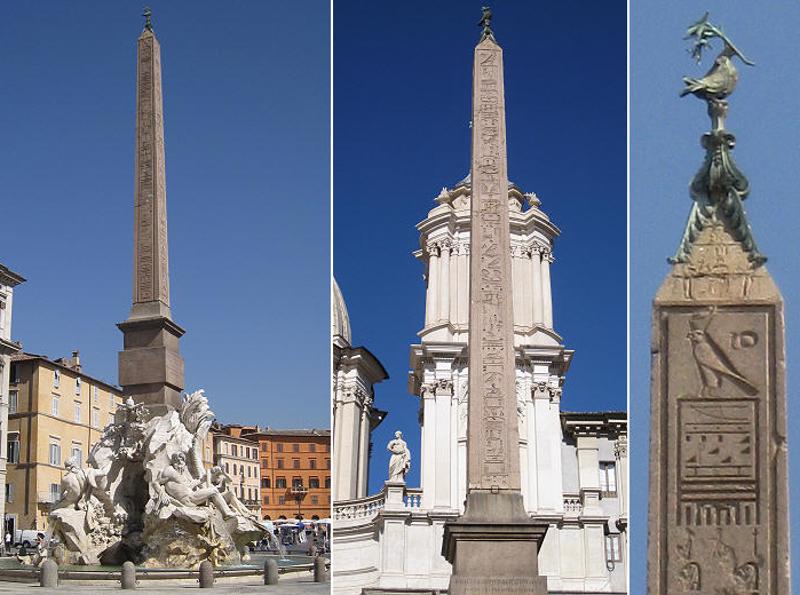Classics 304: Eternal Rome Digital Portfolio
As you walk through the streets of Rome you’ll find a number of cultural influences. You’ll spy plenty of Hellenistic influences but apart from this you’ll also find a fair amount of Egyptian influences. Throughout the years the Romans had varying levels of relationships with the Egyptians and in 30 BC Egypt became a part of the roman empire after Octavian conquered Mark Antony and Cleopatra. Egypt became a major asset to the roman empire over time as it was one of the key produces of grain for the empire and was crucial in keeping an empire of that size fed and under control. The capital of Egypt, Alexandria, became the second largest city in the roman empire and it actually contained the largest port in the empire making it a crucial trading tool. This enourmous trading power emanating from the coast of the Egyptian coast represents the logistics of the spread of Egyptian culture to Rome. With the constant trade between Rome and Alexandria, mainly transporting grain but also with merchant ships passing back and forth so spread Egyptian art and culture into the city. Also with Rome’s conquests and consequent power over Egypt items were taken from Egypt for the great city of Rome. This is how many of the obelisks in Rome got where they are today.
kashford
22 chapters
16 Apr 2020
Chapter Fourteen: Egyptian Obelisk
As you walk through the streets of Rome you’ll find a number of cultural influences. You’ll spy plenty of Hellenistic influences but apart from this you’ll also find a fair amount of Egyptian influences. Throughout the years the Romans had varying levels of relationships with the Egyptians and in 30 BC Egypt became a part of the roman empire after Octavian conquered Mark Antony and Cleopatra. Egypt became a major asset to the roman empire over time as it was one of the key produces of grain for the empire and was crucial in keeping an empire of that size fed and under control. The capital of Egypt, Alexandria, became the second largest city in the roman empire and it actually contained the largest port in the empire making it a crucial trading tool. This enourmous trading power emanating from the coast of the Egyptian coast represents the logistics of the spread of Egyptian culture to Rome. With the constant trade between Rome and Alexandria, mainly transporting grain but also with merchant ships passing back and forth so spread Egyptian art and culture into the city. Also with Rome’s conquests and consequent power over Egypt items were taken from Egypt for the great city of Rome. This is how many of the obelisks in Rome got where they are today.

1.
Introduction
2.
Chapter One: The Gemini Statues
3.
Chapter 2: The Largo Argentina
4.
Chapter Three: The Temple of Jupiter
5.
Chapter 4: The Via Sacra
6.
Chapter Five: The Colosseo
7.
Chapter 6: Statue of Augustus
8.
Chapter Seven: The Arch of Titus
9.
Chapter 8: Constantine's Basilica
10.
Chapter Nine: The Tiber River
11.
Chapter 10: The Sarcophagi
12.
Chapter 11: Caesars Forum
13.
Chapter Twelve: St. Peters Basilica
14.
Chapter 13: Roman Sewers
15.
Chapter Fourteen: Egyptian Obelisk
16.
Chapter 15: The Pantheon
17.
Chapter Sixteen: Bernini Bridge
18.
Chapter 17: The Wedding Cake
19.
Chapter Eighteen: The Mussolini Window
20.
Chapter 19: Basilica of Saint Lawrence
21.
Chapter 20: The Piazza del Popolo
22.
Conclusion: The more things change